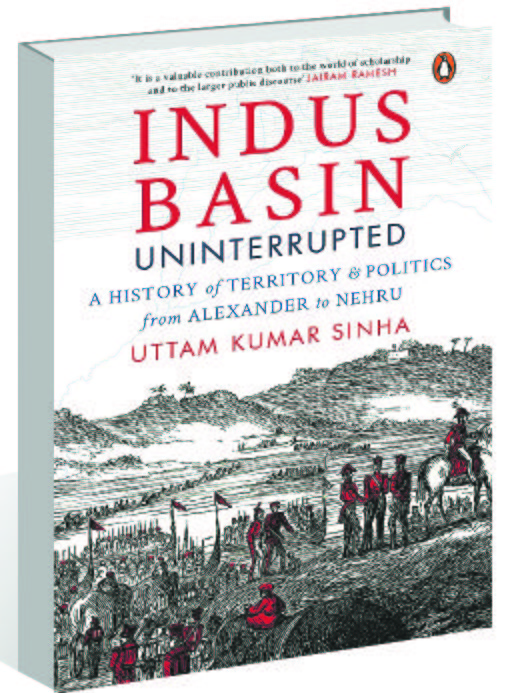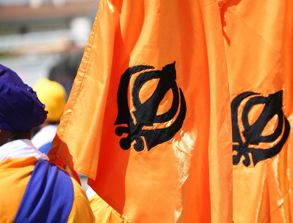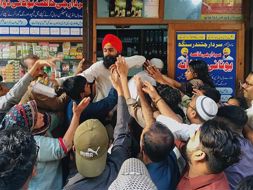Indus Basin Uninterrupted: A History of Territory and Politics from Alexander to Nehru by Uttam Kumar Sinha. Penguin Random House. Pages 368. Rs 799
Book Title: Indus Basin Uninterrupted: A History of Territory and Politics from Alexander to Nehru
Author: Uttam Kumar Sinha
Kahan Singh Pannu
The Indus Valley Civilisation flourished on the banks of Punjab. Seven rivers, including Sind and Ghaggar-Hakra, which some historians term remnants of the now extinct Saraswati, irrigated this alluvial land of opportunities. In ‘Indus Basin Uninterrupted: A History of Territory and Politics from Alexander to Nehru’, Uttam Kumar Sinha delves into the accounts of various invaders as to how they were treated by the rivers of Punjab during their travels and travails.
In 326 BC, the weary troops of Alexander, constantly under attack from Punjab tribes, refused to cross the Beas in spite of an emotional appeal by the conqueror himself to add the Hyphasis (Beas) and beyond to the Macedonian empire. Various kings ruled this region by fixing rivers as their boundaries. In the medieval period, the rulers of Delhi and Punjab utilised the river waters for improving crop production through irrigation canals.
In 1355, Ferozeshah Tughlaq not only constructed the Western Yamuna Canal, but also another canal from Sutlej to his favourite hunting ground of Hisar, where he established a town called Ferozabad.
Shah Jahan made Shah Nahar a hydraulic marvel from Shahpur near Pathankot to Lahore in 1643 for not only irrigating the gardens developed by him, but also facilitating the movement of goods to Lahore from as far as Kashmir. A part of Shah Nahar, now called Badshahi canal, still exists in the Pathankot area, supplying water to mainly litchi orchards in 35 villages.
Sinha also writes in detail about how the Britishers applied modern science of perennial canal irrigation by taming the rivers. The approach was prompted by famines, especially three continual ones in the last decade of the 19th century. The setting up of canal colonies in Rachna Doab and Chaz Doab such as Ganji Bar, Neeli Bar and Sandal Bar was a masterstroke, increasing foodgrain production and revenue.
How the idea of Bhakra dam germinated is interesting. The Lieutenant Governor of Punjab, Louis Dane, a qualified engineer, was coming down the Sutlej from Bilaspur state in 1908 when he saw a “narrow gauge with high abutments” through which the river was flowing. He floated the idea of a storage dam which, after several turns of events spanning five decades, led to the construction of Bhakra dam near Nangal in 1955. Pt Nehru termed it a new temple of a resurgent India.
Sinha narrates at great length as to how the state of Sindh, before Partition, was fighting with the government of Punjab against the idea of damming the Sutlej at Bhakra, which reminds one about the running feud between Punjab, Haryana and Rajasthan today regarding the sharing of surplus Ravi-Beas waters.
Sir Chhotu Ram, the then Revenue Minister in the Punjab government headed by Sir Khizar Hyatt Tiwana of the Unionist Party, was a tireless votary of the Bhakra project. He made AN Khosla, a 1916 graduate of Thomson Engineering College, the Chief Engineer of Punjab in 1942 and approved the project after signing an agreement with the Maharaja of Bilaspur in December 1944, a few weeks before his death.
The book also narrates an interesting fact as to how irrigation engineers helped shape the Indo-Pak boundary line along the Sutlej in Ferozepur district. Sarup Singh, Chief Engineer, Irrigation, Punjab, and Kanwar Sain, Chief Engineer, Bikaner state, were instrumental in keeping Ferozepur district in India although Radcliffe had awarded Ferozepur, Zira and Fazilka tehsils along with the Sutlej headworks to Pakistan. Ferozepur headworks was supplying canal water to Punjab and Bikaner state. On a visit to Ferozepur on August 8, 1947, Sarup Singh learnt that the Deputy Commissioner had been asked to select his headquarter outside the three tehsils. He sent a messenger to Kanwar Sain, who contacted Sardar KM Panikkar, prime minister of Bikaner. Both met Maharaja Sadul Singh, who happened to personally know Lord Mountbatten, the Viceroy. The Maharaja deputed his PM and Chief Engineer to meet Mountbatten at Simla on August 11. They explained the issue in detail, and the same evening it was announced that the Radcliffe award was to be delayed. The final award, announced on August 17, gave Ferozepur to India.
On the Indus river water treaty of 1960 between India and Pakistan under the aegis of World Bank, Sinha, a leading commentator on transboundary water issues, says it neither had a political objective, nor was it an exercise in peace-making. It was a classic case of international mediation to deal with problems of geographical and irrigational requirements on account of Partition. Climate concerns could not be foreseen in the treaty. As with other inter-nation rivers, climate change resulting in reduced flow of water in the Indus basin rivers could lead to economical and political tensions as 30 crore people depend on the water (93 per cent is used for irrigation purposes). No wonder the Central Ground Water Board in 2019 warned that the sub-surface water resource of Indian Punjab shall completely deplete by 2039, rendering the state a desert. A wake-up call, indeed!
The book is essential reading for all those involved and interested in sustainable development, and in the study and execution of irrigation projects.














